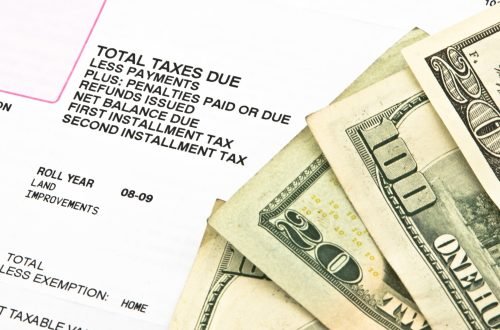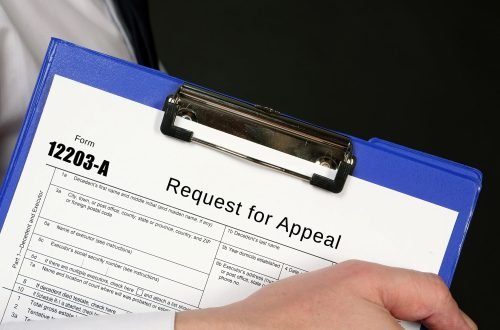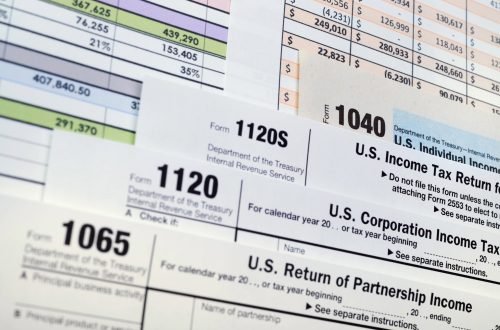Legacy Tax Partners
Get help with Tax Debt
Tax Experts - Help with IRS & State Tax Problems
We Specialize in helping Hard Working Americans with any and all Income Tax Debt Issues. Stop IRS Tax Levy’s & Wage Garnishments
Legal Tax Experts helping you with any Income Tax Problems IRS and State Income Tax Problems
PERSONAL | BUSINESS | CORPORATE | ALL 50 STATES
Tax Debt Help - all 50 states - IRS Tax Experts
We Solve all Tax problems giving you tax relief
Legacy Tax Partners helping Thousands of Americans Save Millions of Dollars with our Expert Legal Tax Help
PERSONAL | BUSINESS | CORPORATE | ALL 50 STATES
The IRS Internal Revenue Code contains section 6331, which authorizes the IRS to levy in order to collect delinquent taxes.
What is the Difference Between a Levy & a Seizure?
None. They involve both the IRS’s taking of a taxpayer’s property to satisfy an unpaid amount. Tax Levies are used to take bank accounts, wages, other income, or other receivables. Seizures are used to take cars, houses, and business property.
What are the Different Types of Tax Levies?
There are two different types of tax levies. First there is the 668 (W). The 668 (W) is used to levy an individual’s wages, salary or other income. Other income is that owed to the taxpayer as the result of personal services in a work relationship. The 668 (A) is used to levy other property that a third party is holding. Other property included bank accounts and business receivables for self-employed people.
How Can a Tax Levy be Served?
A levy can be served by the IRS either in person, by mail, or even by fax. All forms of service are as equally effective.
What is a Bank Tax Levy Holding Period?
A bank levy holding period is a 21 day period of time whereby a bank holds levied funds prior to releasing those funds to the IRS.
Legacy Tax Partners have an extremely high success rate in settling our clients’ tax debt via the IRS Fresh Start Program.
Help with the IRS Fresh Start Program
The IRS Fresh Start program was created in 2011 to modify collection practices and to provide more resolution options for taxpayers with overwhelming tax debt.
Initially these policy changes included relaxed tax lien-filing criteria and more favorable installment agreement terms. Specifically, the 2011 changes included the following:
• Relaxed Lien Filing Criteria: The IRS increased the tax balance to trigger a lien filing from $5,000 to $10,000.
• Expansion of Streamlined Installment Agreements: Taxpayers can now avoid a Tax Lien and set up a payment plan if they owe less than $50,000 (it used to be $25,000) and if they pay it off within 72 months (it used to be 60 months).
• Removal of Federal Tax Lien: The IRS will now allow taxpayers to withdraw the Tax Lien from the public record under certain circumstances (this was not an option before Fresh Start Initiative).
• Allowance of Conditional Living Expenses: So long as the taxpayer can fully pay their taxes within 6 years

A wage garnishment is legal procedure by which the IRS seizes a taxpayer’s income directly from the taxpayer’s employer. Wage garnishments occur only against W-2 wage earners and are continuous in effect.
Therefore the IRS does not have to re-issue a wage levy in order to garnish every paycheck of an employee. Wage garnishments usually takes up to 85% of an employee’s paycheck. Self-employed individuals (who earn 1099s) can also be levied, however the IRS is required to re-issue a levy notice prior to every single payment of income for self-employed individuals.
How does the IRS Wage Garnishment
Process Work?
“The IRS will not surprise a taxpayer with a wage garnishment. Initially, a taxpayer will receive a notice of past due taxes along with a request for immediate payment. If this notice is ignored and unanswered, a taxpayer will eventually receive a
“Final Notice of Intent to Levy”. Usually, after 30 days of the final notice the IRS will issue Form 688-W to a taxpayer’s employer and the garnishment of wages begins.
Taxpayers are afforded some exemptions for dependents on Form 668-W, but the allowance is so small that effect of the wage garnishment is still devastating on a taxpayer’s personal financial situation. What if I want to Appeal an IRS wage levy
Get tax debt help today. IRS & State Tax problem solvers
FREE Private No Obligation Tax consultation
CONTACT US: (855) 900-1333
The Licensed Tax Professionals at Legacy Tax Partners have an extremely high success rate in settling our clients’ tax debt via the IRS Offer in Compromise
Given that the IRS only accepts 24% of all submitted offers, it is advisable to consult a Tax Professional with expertise in this area. We specialize in IRS OIC.
What’s the Difference between The
IRS Fresh Start Tax program and an Offer in Compromise?
OIC BASICS
An Offer in Compromise allows a taxpayer to settle their past-due back tax liabilities for less than the full amount owed. It is a great option for taxpayers suffering from financial hardship.
The factors considered by the IRS include the following:
• The taxpayer’s ability to pay;
• The taxpayer’s income;
• The taxpayer’s expenses; and
• The taxpayer’s asset equity.
Generally, the IRS will approve an Offer in Compromise when the amount offered represents the most the government can expect to collect within a reasonable period (usually it’s 5 years).
Legacy Tax Partners have an extremely high success rate in settling our clients’ tax debt via the IRS Offer in Compromise
Given that the IRS only accepts 24% of all submitted offers, it is advisable to consult a Tax Professional with expertise in this area.
We specialize in IRS OIC. have extensive experience successfully representing clients through the entire Audit process including defense of the filed tax returns, protection from assessment of additional tax liabilities, and resolution on an appeal where necessary.
The IRS conducts over ten thousand audits per year. The audit process involves a review of the individual and/or business tax return(s) and supporting documents to confirm that information has been reported correctly and that the tax due is correct.
There are different kinds of audits. Some are in person (office or field audits) while others are done via mail (correspondence audits).
If subject to a correspondence audit, the taxpayer will receive a letter in the mail asking for more information about certain items on their tax return such as income information, expense information and itemized deduction information
Taxpayers can resolve disputes with the IRS without going to Tax Court through the IRS independent Office of Appeals which offers an impartial forum wherein the Appeals Officer is precluded from siding with the Auditor or Collection Agent in any dispute.
Understanding the Appeals Process
IRS Tax Audit The 30-Day Letter
If your tax return was selected by the IRS for examination, within a few weeks after your closing conference with the Auditor and/or Supervisor, you will receive a package that includes:
• A letter (known as the 30-day letter) notifying you of your right to appeal against the proposed changes within 30 days.
• A copy of the examination report explaining the examiner’s proposed changes.
• A copy of the examination report explaining the examiner’s proposed changes.
• An agreement or waiver form.
You generally have 30 days from the date of the 30-day letter to tell the IRS whether you will accept or appeal the proposed changes. The letter will explain what steps you should take, depending
WHAT OUR TAX CLIENTS SAY…
What can I say other than you are the best IRS tax solvers ever. New to Las Vegas I didn’t know where one could receive tax guidance with dreaded IRS tax problems. With the downturn in the economy, I couldn’t stay up on my quarterly taxes and fell behind year after year. Thanks for the good job the people at Legacy Tax Partners, you are doing a fantastic service to all of us with tax problems. A huge five star thank you.
I owed a lot of IRS back payroll taxes. With the IRS breathing down my neck I knew I had to fix this tax problem fast, but I didn’t know where to go? I searched online and found Legacy Tax Partners and so glad I talked to them. Instantly my stress was over and was able to focus on working. Back on track now and if I ever have a problem with IRS I know where to go. Keep up the great work Legacy Tax Partners!
Very knowledgeable with IRS Tax problems and I had a few. So professional and detail oriented. Great communication throughout the process. A pleasure to have worked with!
Excellent customer service! Very IRS Tax knowledgeable and very polite. I only had 3 tax questions however, Marcus answered questions I didn’t even think to ask? Thank you Legacy Tax Partners! You really help me out of a huge tax problem
Thank you, Legacy Tax Partners, I searched IRS tax help places around me to get my husband’s and my back taxes done and been putting it off until the IRS levied my bank account. Income taxes seem to be more complicated now. Legacy Tax Partners quickly sent out things that were needed for our appointment and got us in the very next day. Mr. Jackson was our advisor, and he was very friendly and knowledgeable. He got us out in and out in an hour. I couldn’t be happier with our experience.
GET HELP WITH TAX DEBT - GET HELP WITH IRS TAX LEVYS - GET HELP WITH IRS WAGE GARNISHMENT - GET HELP WITH IRS TAX PROBLEMS
GET HELP WITH IRS TAX DEBT - GET HELP WITH IRS TAX AUDITS - GET HELP WITH IRS FRESH START PROGRAM - GET HELP WITH IRS TAX AUDITS
If you do not file a return, the IRS will file a return for you. In doing so, they will make a tax and then try to collect that tax.
If you do not have records to file returns, you can retrieve your income records directly from the IRS. This includes W-2 and 1099 information. With this information, it is important to prepare returns as quickly as possible even if other additional information is not available.
If you do not have records to file returns, you can retrieve your income records directly from the IRS. This includes W-2 and 1099 information. With this information, it is important to prepare returns as quickly as possible even if other additional information is not available.
If you call the IRS, they will usually suspend collection activity for a while to give you a chance to prepare the missing or unfiled returns.
Back Taxes – What Are They?
Back taxes refer to delinquent taxes which are overdue. Your record is researched to determine where you stand with the IRS, what you owe, what years are unfiled, what years are necessary to file and to acquire documentation to file those returns. Back taxes come into existence in a few different ways.
• If a taxpayer fails to file returns for a number of years, the IRS will file returns for the taxpayer and thereby assess the tax.
• If a taxpayer is Audited and the IRS determines more tax is due, a “back tax” is then also assessed against the taxpayer.
• When a taxpayer files a return but is unable to pay the tax due, then a back tax is assessed against the taxpayer.
The IRS will consider a taxpayer’s current financial situation when determining whether they should be required to make payments toward an outstanding tax debt.
If a review of the monthly household income and expenses of the taxpayer suggests that they do not have excess monthly income and making a payment to the IRS would cause a hardship, the IRS will allow their account to be placed in not collectible status.
While in not collectible status, the IRS will not pursue enforcement action such as bank levies or wage garnishments while the statute of limitations continues to run (tax liabilities generally expire after ten years), and the taxpayer is not expected to make any payments toward the debt for a period of at least two years.









